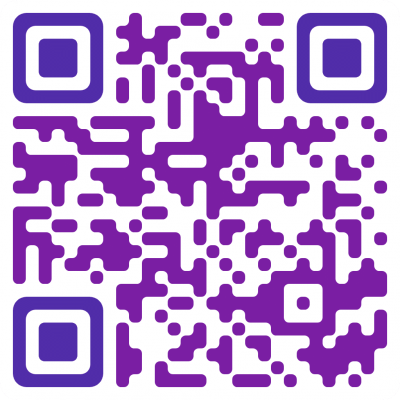
INTRO
What is Strength Training?

Strength training is a type of physical activity that is designed to improve muscular strength and endurance. It involves using resistance to induce muscular contraction, which builds the strength, anaerobic endurance, and size of skeletal muscles.
A strength training challenge can be performed using a variety of methods and equipment, such as free weights, weight machines, resistance bands, and body weight exercises. It is an important part of a well-rounded exercise routine and can help to improve overall health, reduce the risk of injury, and increase bone density.
Starting a strength training challenge is a great way to involve someone else who might like to build a strength training habit with you.
Health Benefits of Strength Training
Starting a new strength challenge is a great way to reap the many health benefits of strength training, including:
Increased muscle strength
A strength training challenge can help to increase the strength and size of the muscles at any age, which can improve physical performance and make it easier to perform everyday activities.
Improved bone health
Strength training can help to increase bone density and reduce the risk of osteoporosis, especially in women.
Increased metabolism
A strength training challenge can help to increase metabolism, which can lead to weight loss and improved body composition.
Improved cardiovascular health
While cardio exercise is important for heart health, strength training can also contribute to improved cardiovascular health by lowering blood pressure and cholesterol levels.
Improved mental health
Strength training has been shown to improve mood and reduce the risk of depression and anxiety.
How to Get Stronger

The key actions of strength training are important because they help to ensure that your strength challenge is done safely and effectively. The key actions of strength training include:
Warm up: It is important to warm up the muscles before strength training to reduce the risk of injury. A light cardio activity, such as walking or jogging, can help to warm up the muscles.
Use proper technique: Using proper technique is important to avoid injury and maximize the effectiveness of the strength training exercises.
This includes using a full range of motion, maintaining proper form, and using the appropriate amount of weight.
Gradually increase intensity: It is important to gradually increase the intensity and complexity of the strength training exercises over time to avoid overloading the muscles.
Vary the exercises: Varying the exercises and using a variety of equipment in your strength challenge can help to target different muscle groups and prevent boredom.
Use proper rest periods: Allowing the muscles adequate rest between strength training sessions is important to allow for recovery and adaptation.
Stay hydrated: It is important to stay hydrated during and after strength training to help the muscles recover and perform optimally.
Focus on proper nutrition: Consuming a balanced diet that includes sufficient protein and other nutrients is important for supporting muscle growth and recovery.
Ideas for Strength Training Challenges
There are several different ways to practice strength training, and it’s encouraged to try different approaches to challenge different muscle groups and to find what works best for you. Some different approaches might include:
Free weights
This method of strength training involves using dumbbells, barbells, and other types of weights to perform various exercises that target different muscle groups.
Weight machines
These machines use weights or other types of resistance to provide a specific range of motion for strength training exercises.
Resistance bands
Elastic bands designed for exercise can provide resistance for the muscles to work against and can be used to perform a variety of strength training exercises.
Body weight exercises
Also known as calisthenics, these exercises use the person’s own body weight as resistance to build strength and can be done anywhere with no equipment.
Kettlebells
Kettlebells are weights with a handle that can be used to perform a variety of strength training exercises that target different muscle groups.
Medicine balls
Weighted balls can be used to perform a variety of strength training exercises that target different muscle groups.
Starting a Strength Training Challenge
Starting a new habit can be difficult, so we’ve put together some helpful suggestions so you can get started with your strength training challenge.
1
Set a goal
Determine how often you want to strength train and for how long. Consider setting a goal for the amount of weight you can lift.
2
Choose a time & be consistent
Select a specific time of day that works best for you to strength train. Find a time that fits your schedule and try to strength train at the same time everyday to make it a habit. Change the muscle that you’re training so that you don’t create strain.
3
Find a comfortable space
Designate a comfortable space where you can strength train without distractions or any hazards.
4
Start small
Begin with light weights or simple exercises and gradually increase the intensity and weight over time. Start out with a weight that provides some challenge after lifting it 10 times.
5
Make it enjoyable
Choose exercises and equipment that you enjoy and that feel good to your body. If you feel pain, you may need to reduce your weight or change your technique.
6
Be patient
It takes time to develop a new habit, so be patient and don’t get discouraged if you don’t see results right away.
7
Seek guidance
If you are unsure about how to strength train properly, consider seeking guidance from a fitness professional or personal trainer.
Overcoming Strength Training Setbacks

It’s common to encounter some setbacks within the first few weeks of starting any new habit.
Here are some ways to overcome common setbacks when you’re starting a strength training challenge:
Lack of time: If you have a busy schedule, it can be difficult to find the time to strength train. We recommend setting aside a specific time each week to train, even if it’s just for a few minutes.
Lack of motivation: It can be hard to stay motivated to strength train, especially if you don’t see immediate results. Consider starting a strength training challenge with a friend or partner to stay motivated and accountable.
Pain or discomfort: Some people may experience pain or discomfort when strength training, which can be a deterrent. If you are experiencing pain or discomfort when strength training, consider seeking guidance from a fitness professional or personal trainer to ensure you are using proper technique.
Lack of knowledge: Not knowing how to strength train properly or what exercises to do can be a barrier to starting a routine. Educate yourself about proper strength training techniques and what exercises are best for your body.
Don’t get discouraged if you don’t see immediate results. Strength training is a gradual process, and the benefits will accumulate over time.
Common Strength Training Questions
It is a good idea to utilize different strength training techniques because it can help to prevent boredom and keep the body guessing, which can help to improve results.
Using a variety of techniques can also help to target different muscle groups and can be more effective at improving overall strength and functional fitness.
Additionally, using different techniques can help to prevent overuse injuries and can make strength training more enjoyable. It is generally recommended to incorporate a variety of exercises and techniques into your strength training challenge to achieve the best results.
Overtraining can occur when an individual performs excessive exercise without adequate rest and recovery. Signs and symptoms of overtraining include:
- Fatigue, persistent tiredness and lack of energy.
- Loss of motivation and decreased performance.
- Increased risk of injury.
- Sudden drop in strength and endurance.
- Persistent muscle soreness and stiffness.
- Elevated heart rate and blood pressure.
- Insomnia or difficulty sleeping.
- Loss of appetite and weight loss.
- Depression and mood swings.
It’s important to note that these symptoms can also be caused by other factors such as illness or stress.
If you suspect you may be overtraining, it’s important to take a break and allow your body to recover before resuming your training. Also consider consulting a fitness professional or healthcare provider.
It’s important for beginners to start with lighter weights and fewer reps, and gradually increase the weight and reps over time as they become stronger and more comfortable with the exercises. Remember to rest and recover between workout days. It’s also important to consult a fitness professional or healthcare provider before starting any new exercise routine.
Here are some good strength training routines for beginners:
Full Body Workout: This routine focuses on all major muscle groups in the body and can be done 2-3 times a week. Exercises may include squats, lunges, push-ups, rows, and bicep curls.
Upper Body Workout: This routine focuses on the upper body muscles such as the chest, shoulders, back, and arms. Exercises may include push-ups, rows, bicep curls, tricep dips and shoulder press.
Lower Body Workout: This routine focuses on the lower body muscles such as the legs and glutes. Exercises may include squats, lunges, leg press, and calf raises.
Core Workout: This routine focuses on the muscles of the abdomen and lower back. Exercises may include crunches, planks, leg raises and Russian twists.
Support Your Strength Training Challenge
There are many ways to get support when building a strength training habit, including:
Hiring a personal trainer or coach: A personal trainer or coach can provide customized workouts, guidance, and motivation to help you reach your strength training goals.
Joining a gym or fitness center: Many gyms and fitness centers offer a variety of strength training equipment and may also have personal trainers or fitness classes available.
Participating in group fitness classes: Group fitness classes can provide a sense of community and accountability, as well as guidance from a trained instructor.
Using an app or online program: There are many apps and online programs that offer workouts, tracking, and other features to help you build a strength training habit.
Seeking support from friends and family: Sharing your strength training goals with friends and family and asking for their support can help you stay motivated and on track. Consider inviting them to start a strength challenge with you to keep you accountable.
Seeking support from a mental health professional: If daily stressors are creating added challenges, a mental health professional can help you work through any mental or emotional barriers that may be hindering your progress.
Setting up a home gym: If you have the space and resources, setting up a home gym can provide convenient access to equipment and remove the need to travel to a gym.
Start a group strength training challenge today
Your gym or community will love it! ❤️










